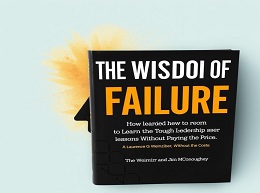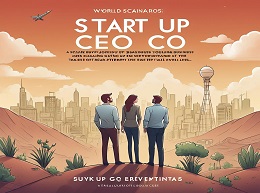The Start-Up J Curve

Navigating the Startup Journey
"The Start-Up J Curve: The Six Steps to Entrepreneurial Success" by Howard Love is an essential guide for entrepreneurs aiming to understand the lifecycle of startups. Love, a seasoned entrepreneur and investor, provides a comprehensive roadmap that helps startups navigate the inevitable challenges and capitalize on the opportunities that arise along the way. This review delves into the key concepts and stages outlined in the book, supplemented with real-world examples and actionable insights to engage readers and provide practical guidance.
The Concept of the J Curve
The J Curve in startups represents the journey from initial ideation to achieving significant success. It highlights the early struggles and setbacks (the dip) before a startup begins to experience growth and upward momentum. Love categorizes this journey into six distinct phases, each with its own challenges and opportunities.
Early Struggles of Airbnb
Airbnb's journey epitomizes the J Curve. Initially, the founders faced numerous challenges, including limited traction and funding difficulties. However, by refining their business model and addressing user needs, Airbnb overcame the early dip and emerged as a successful global platform.
Ideation and Market Research
The first phase involves ideation and market research. Entrepreneurs need to identify a problem worth solving and determine if there is a viable market for their solution. This phase is crucial for laying a strong foundation for the startup.
Dropbox’s Simple Yet Powerful Idea
Dropbox started with a simple idea: making file sharing easier and more efficient. Founder Drew Houston identified a common problem and conducted market research to validate the demand for his solution. This early groundwork set the stage for Dropbox’s subsequent success.
Developing a Minimum Viable Product (MVP)
In the release phase, the focus shifts to developing and launching a Minimum Viable Product (MVP). An MVP is a basic version of the product that includes only the essential features needed to test the core hypothesis and gather user feedback.
Twitter’s MVP Launch
Twitter’s initial version, launched as a side project within Odeo, was a basic SMS-based platform for sharing status updates. The simplicity of the MVP allowed the team to test user engagement and iterate quickly based on feedback, ultimately leading to its widespread adoption.
Iteration and Pivoting
The morph phase involves iterating on the MVP based on user feedback and market response. Startups may need to pivot their business model or product features to better align with market demands and user needs.
Instagram’s Shift from Burbn
Instagram started as Burbn, a location-based check-in app. However, user feedback revealed that the photo-sharing feature was the most popular. The founders pivoted to focus exclusively on photo sharing, leading to Instagram’s massive success.
Finding Product-Market Fit
In the model phase, startups aim to find product-market fit and establish a scalable business model. This involves refining the value proposition, pricing strategy, and revenue model to ensure sustainable growth.
Slack’s Journey to Product-Market Fit
Slack, initially developed as an internal communication tool for a gaming company, found product-market fit by addressing the need for efficient team communication. By refining their business model and focusing on user experience, Slack achieved rapid growth and scalability.
Scaling Operations and Expanding Market Reach
Once product-market fit is achieved, startups enter the scale phase, focusing on accelerating growth and expanding market reach. This involves scaling operations, enhancing marketing efforts, and optimizing processes to handle increased demand.
Uber’s Rapid Expansion
Uber’s success in the scale phase is evident from its rapid global expansion. By leveraging a scalable business model and aggressive marketing strategies, Uber quickly extended its reach to cities worldwide, becoming a dominant player in the ride-sharing industry.
Exiting or Sustaining Growth
The final phase, harvest, involves realizing the value created by the startup. This could mean preparing for an exit through acquisition or IPO, or continuing to sustain growth and profitability as a standalone company.
WhatsApp’s Acquisition by Facebook
WhatsApp’s acquisition by Facebook for $19 billion represents a successful exit in the harvest phase. After achieving substantial growth and user base, the founders capitalized on the opportunity to sell the company, realizing significant value for stakeholders.
Embracing the Dip
One of the key takeaways from "The Start-Up J Curve" is the importance of embracing the early struggles and setbacks (the dip) as part of the entrepreneurial journey. By understanding that these challenges are temporary and necessary for growth, entrepreneurs can persevere and remain motivated.
Airbnb’s Perseverance
Despite early rejections and funding challenges, Airbnb’s founders persevered, continuously refining their platform and business model. Their resilience during the dip ultimately led to their breakthrough and long-term success.
Importance of Feedback and Iteration
Another crucial lesson from the book is the value of feedback and iteration. By actively seeking user feedback and being willing to pivot, startups can adapt to market demands and improve their chances of success.
Pivoting to Meet Market Needs
Many successful startups, including Instagram and Slack, achieved success by listening to user feedback and pivoting their business models. This iterative approach allowed them to align with market needs and drive growth.
A Roadmap for Entrepreneurial Success
"The Start-Up J Curve: The Six Steps to Entrepreneurial Success" by Howard Love provides a practical and insightful roadmap for navigating the complex journey of building a startup. By understanding and embracing the six phases Create, Release, Morph, Model, Scale, and Harvest entrepreneurs can better prepare for the challenges and opportunities that lie ahead.
Love’s comprehensive guide, enriched with real-world examples and actionable strategies, serves as an invaluable resource for aspiring entrepreneurs and seasoned business leaders alike. Whether you are just starting out or looking to take your startup to the next level, "The Start-Up J Curve" offers the insights and tools needed to achieve entrepreneurial success and make a lasting impact in the market.













